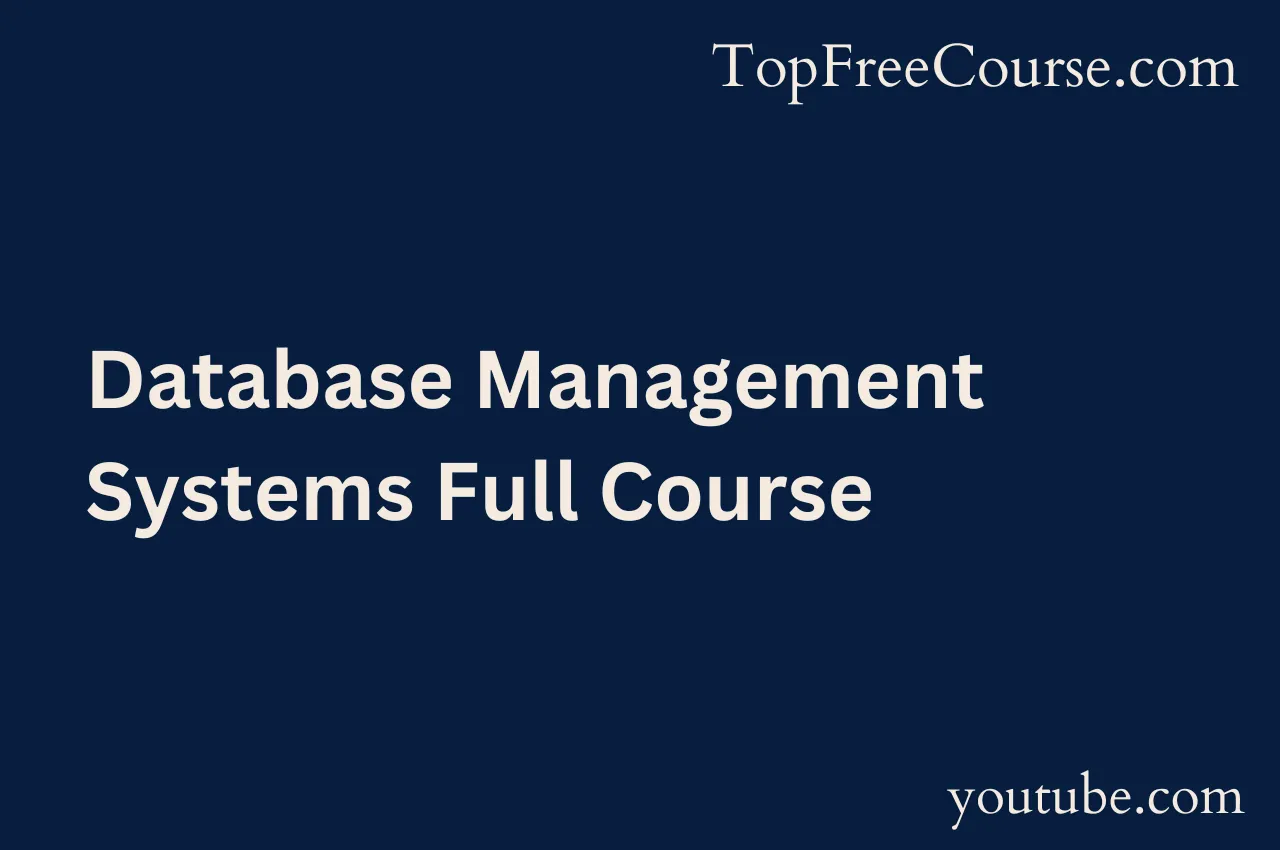What Will You Learn?
Discover the basics of Database Management Systems (DBMS) – a helpful software for creating and managing databases efficiently. Perfect for college students and those gearing up for GATE and campus interviews, this course covers essential DBMS concepts. Learn how DBMS controls data duplication, enhances security, and maintains consistency in a simple way. Dive into the world of databases, essential for e-commerce and web applications, and boost your knowledge by solving past GATE questions.
About This Course
Provider: Youtube
Format: Online
Duration: 7 hours to complete [Approx]
Target Audience: Beginners
Learning Objectives: By the end of this free course, you will have a solid understanding of Database Management Systems (DBMS), learning to efficiently create, manage databases and control data redundancy
Course Prerequisites: NA
Assessment and Certification: NA
Instructor: Neso Academy
Key Topics: Database Management System, Databases, Relational Database
Topic Covered:
- - Introduction to DBMS
- - Example of Database
- - Characteristics of the database approach
- - Actors on the scene
- - Workers behind the scene
- - Advantages of DBMS Approach
- - Brief history of Database Applications
- - When not to use DBMS
- - Data models, schemas, instances
- - Three- schema architecture and data independence
- - Database languages and interfaces
- - Database System Environment
- - Centralized and client-server architectures
- - DBMS Classification
- - High –Level Conceptual Data Models
- - Database Application Example
- - Entity types, entity sets, attributes, and keys
- - Relationship types, relational sets, roles, and structural constraints
- - Weak entity types
- - Refining ER Design
- - ER Diagrams, Naming conventions, design issues
- - Relational model concepts
- - Relational model constraints and relational database schemas
- - Update operations, transactions, constraint violations
- - Unary relational operations
- - Relational algebra operations
- - Binary relational operations
- - Additional Relational operations
- - Examples of queries in relational algebra
- - Relational database design
- - SQL Data Definition and Data Types
- - Specifying basic constraints in SQL
- - Schema change statements in SQL
- - Basic queries in SQL
- - More complex SQL Queries
- - Insert, Delete, and Update statements in SQL
- - Specifying constraints as Assertion and Trigger
- - Additional features of SQL
- - Database programming issues and techniques
- - Embedded SQL, Dynamic SQL
- - Database stored procedures and SQL / PSM
- - Informal Design Guidelines for Relation Schemas
- - Functional Dependencies
- - Normal Forms Based on Primary Keys
- - General Definitions of Second and Third Normal Forms
- - Boyce-Codd Normal Form
- - Properties of Relational Decompositions
- - Algorithms for Relational Database Schema Design
- - Multivalued Dependencies and Fourth Normal Form
- - Join Dependencies and Fifth Normal Form; Inclusion Dependencies
- - Other Dependencies and Normal Forms
- - The ACID Properties
- - Transactions and Schedules
- - Concurrent Execution of Transactions
- - Lock- Based Concurrency Control
- - Performance of locking
- - Transaction support in SQL
- - Introduction to crash recovery
- - 2PL, Serializability, and Recoverability
- - Lock Management
- - Introduction to ARIES
- - The log
- - Other recovery-related structures
- - The write-ahead log protocol
- - Checkpointing
- - Recovering from a System Crash
- - Media Recovery
- - Other approaches and interaction with concurrency control

Comments